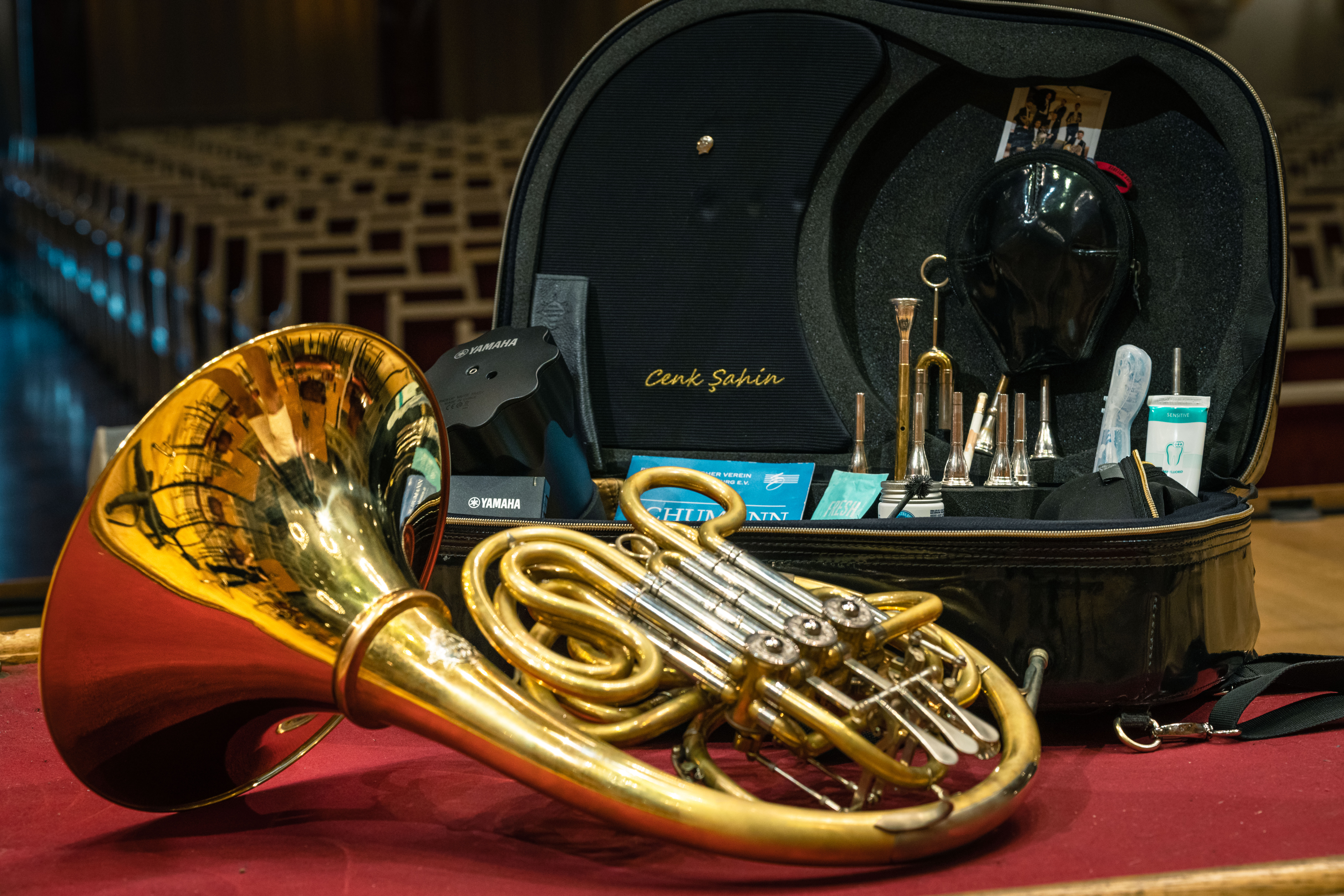16.00 Uhr
Neujahrskonzert
 © Tobias Kruse / OSTKREUZ
© Tobias Kruse / OSTKREUZ
Cenks Sahin’s uniquely crafted horn case is not just visually striking, but also fully functional. Our associate principal French horn has everything he needs, whether he’s practicing on the tour bus or assessing an embouchure while teaching. It’s the ultimate all-in-one solution.

Fortunately, a horn is not as sensitive to rain or cold as a violin – playing atmospheric music at the Christmas market is no problem for brass players. But you still have to take very good care of the instrument, says our French horn player Cenk Sahin: “The bell, in particular, needs to be protected, because the material there is especially thin.” The horn is not only sensitive to dents, but also to sweat – a leather hand guard can prevent contact with the horn and also slipping when the right hand holds the instrument while playing. Like all brass players, Cenk also keeps a toothbrush kit in his case: “It’s good for me and for the instrument!”
Whether it’s a normal double horn, natural horn or Wagner tuba (which, despite its name, is a low-range secondary horn instrument), generally, the same mouthpiece can be used for all. For Cenk, however, there are subtle differences: “Sometimes I use a smaller one, so that high notes sound clean and vigorous.” He uses a different mouthpiece on the natural horn to “obtain the perfect tone” from this historical instrument. Of course, none of the mouthpieces should ever fall off. But just in case, a replacement mouthpiece belongs in every well-stocked horn case. Recognizable by the metal circle, there is a “second valve slide” between Cenk’s mouthpieces: “With its help, I can check whether a student’s embouchure is correct while teaching.”
To keep his own embouchure in shape on the tour bus or on walks, even without an instrument, Cenk uses a practice mouthpiece with a small hole in the metal tube for low notes. Another device that is useful on the go is a “silent brass”, a system of mutes and connected headphones. That way, no one can complain about a horn player practicing in the hotel room next door! Sounds great, but it’s “only for bridging the gap if you wouldn’t be able to practice at all otherwise,” Cenk explains.
Speaking of touring, almost all musicians love concert tours. French horns are no exception. They also particularly enjoy playing together, as two mementos found in Cenk’s case show: A photo of the seven-member horn section of the Konzerthausorchester from 2019 after Mahler’s 1st in Tokyo, and a program booklet from his last concert featuring Robert Schumann’s Concert Piece for Four Horns and Orchestra – in which Cenk was a guest in colleague Timo Steininger’s quartet “German Hornsound”.
A small Mustafa Kemal Atatürk pin can always be found in Cenk’s horn case. “He is a role model for me because he never gave up, even in very difficult times, and made so much possible. Whenever I’m feeling down or facing a challenging situation, I draw inspiration from him and am motivated to keep going.”

Cenk Sahin comes from Turkey and has been Associate Principal French Horn in the Konzerthausorchester since 2012.
Photos: Markus Werner (instrument case); Tobias Kruse/Ostkreuz (cover portrait)